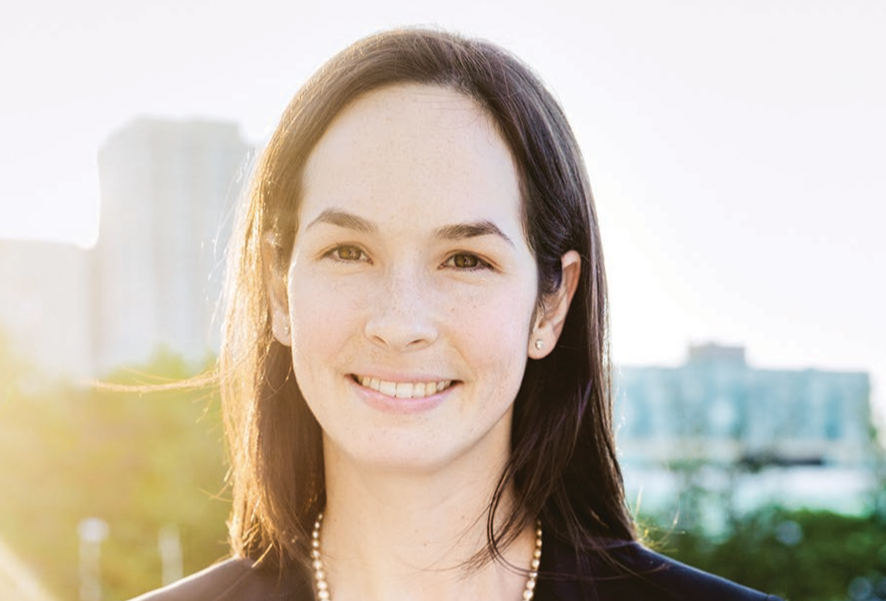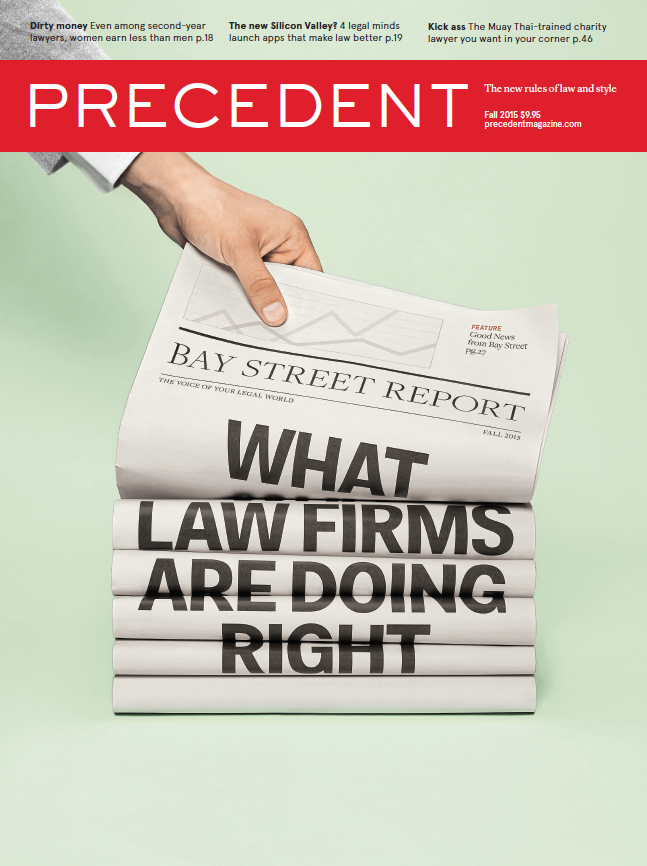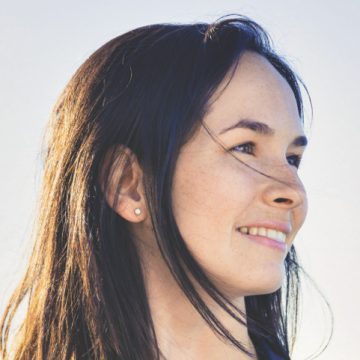TIFFANY MURRAY’S BIG BREAK CAME IN 2013, just one day after giving birth to her second child. The timing wasn’t perfect, but she had received an email she couldn’t ignore. A big aboriginal organization needed legal advice on creating a brand new financial product. The deal is still pending, so the details can’t be released, but suffice it to say that it would completely innovate the way aboriginal communities can achieve financial independence. It’s a big deal for the parties involved, and they wanted a lawyer with a particular expertise in a complex new area of law: aboriginal banking.
For years, Murray had worked to build an aboriginal-banking practice at her firm, Borden Ladner Gervais LLP, where she launched her career as a summer student in 2006. But it was hard. Murray already had a full finance-law workload. “When you want to establish something new,” she says, “you have to inch it forward over and above what you’re already expected to do.”
But with this email she could prove to the firm that her idea for a new practice area in aboriginal banking had potential — and, more importantly, a client base. “I could then make the business case for this area to the firm,” recalls Murray. “It was a game-changer for my practice.” So, with a two-day-old in her arms, she got down to work.
Murray, now 35, had long seen the demand for lawyers with an expertise in aboriginal finance law. She knew that, under the Indian Act, “Indian bands” are unable to use most on-reserve property as collateral. So borrowing money to raise capital is difficult. “Because they can’t leverage all of their assets,” she says, “they often have to pay higher interest rates when they get a loan.” Yet bands need to borrow money for all kinds of things: to build community centres, schools or wastewater plants. Which means they need lawyers to help them navigate the maze of securities law and aboriginal law to make these financial transactions possible.

Tiffany Murray, Canadian Mortgage and Housing Corporation
Earlier this year, two years after that email showed up, Murray made partner. Her firm, clearly, was impressed. “Tiffany’s distinctive expertise will become more in-demand,” says Stephen Redican, a partner in BLG’s financial-services group. “Aboriginal bank- ing is an emerging market in Canada, and major financial institutions in Canada are targeting this growth area.”
Murray has been drawn to aboriginal issues since her undergraduate days. At the time, she took a co-op position with the Department of Indian and Northern Affairs transcribing old church and residential school records. “As you can imagine, some of those records were very difficult to read,” she says. “My experience there was one factor in why
I wanted to go to law school.” Murray identifies as Haudenosaunee (Six Nations, Mohawk Nation, Turtle Clan, to be precise), but her relationship with her own history is complicated. “I have struggled with my authenticity as an urban First Nations person who is disconnected from reserve life,” says Murray, who grew up in St. Catharines, Ont. While some of her aboriginal law-school friends at the University of Toronto — a group Murray calls “the community I felt most at home with” — have returned to reserves, Murray has spent her legal career at an office on Bay Street. “I struggle with being disconnected.”
After nearly a decade at BLG, Murray is leaving Bay Street. Later this year, she will join the Canadian Mortgage and Housing Corporation as an in-house lawyer. It’s a dream job for Murray, but it means she’ll be moving her daughters and her husband of eight years from their home in Etobicoke to a brand new life in Ottawa. She sees it as an adventure, rather than a sacrifice — plus, in her new role, she’ll be able to make a direct impact on communities in need.
“It’s a Crown corporation that helps Canadians access housing — which is pretty important,” she says. “They work with First Nations on-reserve housing programs, one of the things that drew me to the opportunity.”
Murray wasn’t looking for a career change, but when the job offer came her way, she had to say yes. “Every now and then, life pushes you in a new direction. This was a major sign. I couldn’t ignore it.”

The lowdown
Year of call: 2008
Favourite legal character: Erin Brockovich
Favourite item in closet: A Kate Spade purse given to me by a dear friend
Greatest extravagance: Flying to Florida to participate in runDisney races
If I weren’t a lawyer I’d be: A university professor
Pet peeve: Tim Hortons at Scotia Plaza (I really need to start going somewhere else)
 This story is from our Fall 2015 issue.
This story is from our Fall 2015 issue.
Photography by Raina + Wilson


